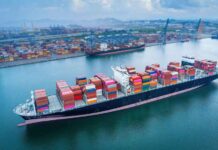Understanding supply chains involves much more than simply supplier management, transportation costs and times, and logistics.
We live in a period when everything looks so near because of satellite-enabled transparency and connectedness, omnipresent internet and data, and the online information world. Conversely, regional disparities in energy costs are a consequence of geopolitical instability. The effects of climate change, ongoing hostilities, and other factors are dividing the globe and causing gaps to increase rather than close.
Over the last year, supply chains have been regularly disrupted by global and regional disruptions, mostly in the form of increased supplier and transportation costs as well as delays in deliveries. Supply chain managers should anticipate local or worldwide interruptions for the foreseeable future—at least the next twelve months.
Overcoming such obstacles is only going to become more difficult. This is particularly true for issues pertaining to manufacturing footprints, secure freight route management, and data and intellectual property protection.
Supply chain operations that are robust and efficient must be implemented well in a number of crucial areas.
Openness
Complete visibility over orders and associated information is crucial. For a centralized view of orders and shipments, the supply chain control tower may be connected with specialized cargo tracking and logistics software.
In order to offer real-time or almost real-time information regarding the location of the package as well as the humidity, temperature, shock, and light it is exposed to, tracking systems are usually cloud-based. Infrastructure expenses and battery life must also be taken into account.
Because data is so prevalent, it is necessary to increase openness and trust across the whole supply chain. Because blockchain technology allows for immutable tracking of commodities, it may help prevent fraud.
The most important data that supply chain teams use to reduce bottlenecks and control costs are factory capacity, quality problems, and inventory. To enable transparency across operations, a secure and scalable infrastructure contextualizes and combines data from several sources.
Safety of Cargo
Focusing on cargo safety is necessary to guarantee complete and on-time delivery. This comprises:
Tracking cargo: RFID and GPS technology keep track on the whereabouts and state of goods in real time.
Security protocols: Put strict controls in place to guard against loss, tampering, and theft.These may include technological innovations like secure document management, video monitoring and surveillance, and RFID and GPS tracking.
Management of incidents: Create strategies to deal with and lessen compromised or lost cargo. These plans usually include, among other things, contingency plans, loss mitigation strategies, cargo recovery and containment procedures, and real-time event reporting.
Geopolitics, Water, and Weather
Risks from weather-related consequences, water shortages, and geopolitical control over resources may be tracked with the use of AI-powered models and geopolitical trends. The implications of heat stress on supply chains, namely in agriculture, construction, and mining, were emphasized in a Nature research. Because of the scarcity of raw resources, light manufacturing, which includes the production of metal goods, rubber and plastic goods, food processing, drinks, and tobacco products, is susceptible to unintended consequences.
Energy/Power
Transport costs, the footprint of industrial and transportation hubs, and the availability of essential raw commodities such as oil, gas, and liquefied petroleum gas are influenced by national energy policy. The power supply’s dependability for industrial and logistical activities must be evaluated by planners.
Particularly when it comes to the procurement of green goods, national sustainable energy plans and green energy sources like hydrogen, solar, and wind are important. Sustainability auditors and supply chain managers need to know how these energy sources affect the cost and compliance of the supplied items.
Online safety
Cyberattacks are quite dangerous. According to a 2023 World Economic Forum survey, 86% of company executives and 93% of cybersecurity experts think that a disastrous cyberattack is likely within the next two years. One possible contributing element to such an assault was noted as geopolitical instability.
Suggested actions comprise:
Data protection: Put strong safeguards in place to keep sensitive data safe. Use public key infrastructure, user authentication and access control, secure file transfer protocols, data integrity monitoring, and end-to-end encryption.
Strict controls should be used to limit access to just those who are permitted. Make use of multi-factor authentication, attribute-based access control, role-based access control, etc.
Incident Response: To swiftly handle and lessen the effects of cybersecurity events, create a thorough incident response strategy.
Regulations Needed
Regulatory compliance is a never-ending task. Hazardous material handling regulations, restricted and dangerous products handling regulations, and customs requirements are regularly updated and rigorously enforced.
It is advised that supply chain participants keep up to date on the most recent rules, fund extensive staff training initiatives, keep correct records, and put in place strong quality control procedures in order to assure compliance.
It is essential to be aware of and abide by laws pertaining to carbon management, such as the Corporate Sustainability Reporting Directive (CSRD) and the Carbon Border Adjustment Mechanism (CBAM). Organizations involved in the supply chain must also concentrate on projects that will lessen their carbon footprint (emissions from scopes 1, 2, and 3) and increase sustainability across the chain.
Taxes and Tariffs
Finance and the supply chain team need to be aware of the tariff and tax landscape. For instance, trade tensions between China and the EU and the US have lately led to a number of measures and retaliations.
The Biden administration targeted nearly $18 billion in vital sectors in May when it imposed major tariff hikes on China. According to Forbes, these tariffs, which would increase U.S. industries while tripling to 100% on Chinese EVs, are intended to address China’s unfair trade practices and overcapacity.
Among the goods that would see higher import prices are semiconductors, batteries, battery packs, some steel and aluminum products, different ores and minerals, such as manganese and cobalt, and radioactive materials.
In summary
The complexity of causal linkages is growing, and black-swan events are happening more often, making supply chain orchestration an increasingly multi-criteria activity. Organizations who can transform complete transparency of data, expenses, inventory, and cash management into a robust and adaptable operating model will emerge victorious from the global supply chain issue.
Organizations must face a number of challenges on this continuous journey. Digital technology is essential to success, along with labor and operational resources. According to an IDC report, legacy/on-premises applications that are neither scalable or adaptable make up the majority of the IT systems in certain firms.
Planning has always been an essential subject in every firm that relies on a supply chain. Efficiency-driven advancements include supply chain planning tool upgrades, smooth application integration, flexible and adaptive logistics agreements, and supply chain diversity. While enhancing supply chain robustness, including visibility and agility, should be the worldwide goal, some firms have prioritized costs above resilience.
The supply chain is becoming a political weapon due to the present confluence of interrelated commerce and global geopolitical conflicts. It is essential for organizations to possess the ability to seamlessly combine intellect, technology, and labor into a cohesive, ever-evolving organism, irrespective of political shifts.

























